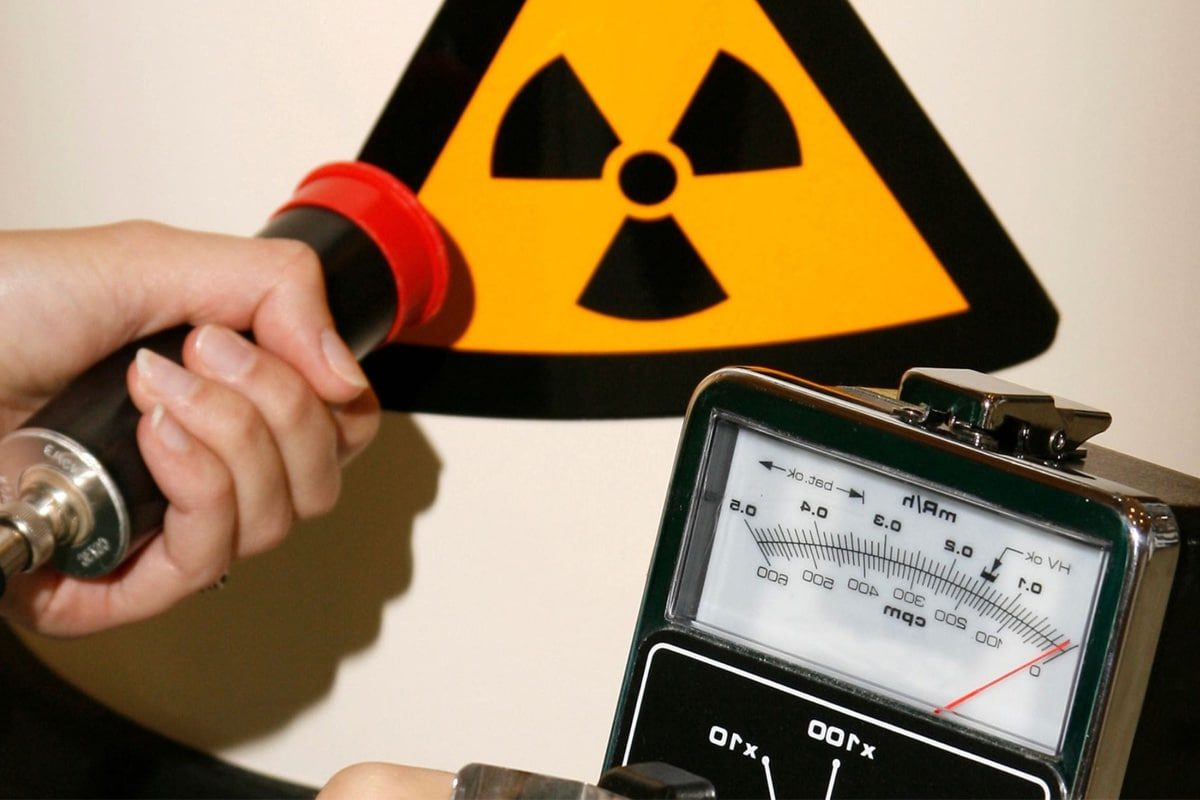
Lazer Kesim Makinelerinin Radyasyonunu Anlamak
Lazer kesim teknolojisi, yüksek verimliliği ve hassas işleme yetenekleri nedeniyle otomotiv, elektronik, metal işleme ve diğer endüstrilerde yaygın olarak kullanılmaktadır. Lazer kesim üretim verimliliğini artırsa ve malzeme israfını azaltsa da, çalışması sırasında oluşan farklı radyasyon türleri, özellikle uzun süreli maruziyetin neden olabileceği sağlık riskleri olmak üzere ekipman operatörleri ve yöneticileri için endişe vericidir. Bu nedenle, lazer kesim makinelerinin ürettiği radyasyon türlerini ve bunların güvenli bir şekilde nasıl kullanılacağını anlamak önemlidir. Bu, yalnızca operatörlerin sağlığını garantilemekle kalmaz, aynı zamanda işletmeler için daha güvenli bir çalışma ortamı yaratır.
Bu makale, lazer kesim işlemi sırasında üretilen optik radyasyonun, iyonlaştırıcı olmayan radyasyonun ve iyonlaştırıcı radyasyonun özelliklerini ve bunların insan vücuduna verebileceği olası zararları inceleyecektir. Aynı zamanda, radyasyon seviyelerini etkileyen faktörleri tanıtacağız ve şirketin operasyonlarının güvenlik gerekliliklerini karşılamasını sağlamak için düzenlemeler ve standartlar sunacağız. Ayrıca, makale, mühendislik kontrolü, idari yönetim ve kişisel koruma önlemleri yoluyla radyasyon maruziyeti riskini nasıl en aza indireceğinizi paylaşacaktır. Bu bilgilerle, şirketler yalnızca güvenlik farkındalığını iyileştirmekle kalmaz, aynı zamanda çalışanların sağlığını korurken verimli üretimi de sürdürebilir.
İçindekiler
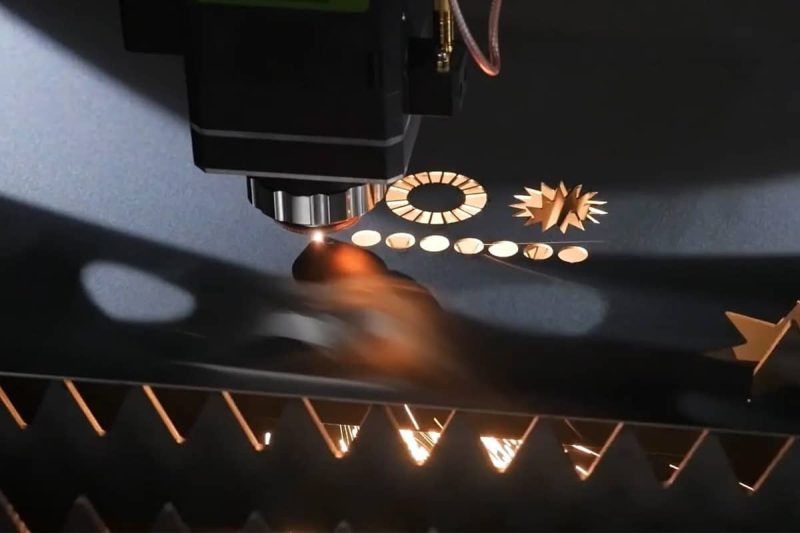
Lazer Kesim Makinelerinin Radyasyon Türleri
Optik Radyasyon (Lazer Işını)
Lazer kesim makineleri Malzemeleri işlemek için yüksek enerjili lazer ışınları kullanın. Bu lazer ışını, malzemeleri eritebilen, buharlaştırabilen veya ablate edebilen yüksek yoğunluklu ışık radyasyonu oluşturmak üzere odaklanır. Lazer ışınının enerjisi çok küçük bir alanda yoğunlaşır ve üretilen ışık radyasyonu kızılötesinden ultraviyole'ye kadar geniş bir aralığı kapsar ve işlemede mükemmel hassasiyet ve verimlilik sağlar. Lazer ışınını hassas bir şekilde kontrol ederek, lazer kesim makineleri çeşitli malzemeler üzerinde yüksek kaliteli kesme, işaretleme ve gravür gerçekleştirebilir ve imalat, otomotiv endüstrisi, havacılık ve diğer alanlarda yaygın olarak kullanılır.
Özellikler
- Yüksek enerji konsantrasyonu: Lazer ışınının enerjisi küçük bir nokta alanında oldukça yoğunlaşmıştır ve bu konsantrasyon lazerin son derece yüksek hassasiyetle kesmesini veya işaretlemesini sağlar. Işının küçük çapı nedeniyle lazer kesimi son derece hassas işlemeyi başarabilir ve yüksek hassasiyet gerektiren endüstriyel uygulamalar için uygundur.
- Güçlü penetrasyon: Lazer ışını güçlü penetrasyona sahiptir ve metaller, plastikler, cam ve seramikler gibi çeşitli malzemelere etkili bir şekilde nüfuz edebilir. Lazerin penetrasyon yeteneği, farklı kalınlıklardaki malzemeleri işlemesini ve farklı derinliklerde kesme ve gravür elde etmesini sağlar.
- Geniş spektral aralık: Lazer ışık radyasyonunun dalga boyu aralığı kızılötesinden ultraviyole'ye kadar uzanır ve farklı malzemelere ve işleme gereksinimlerine geniş bir uyum aralığı sağlar. Spektral aralıktaki bu esneklik, lazer kesim makinelerinin yüksek yansıtıcı malzemeler ve yüksek erime noktalı malzemeler dahil olmak üzere çeşitli endüstrilere ve malzemelere uygulanmasını sağlar.
Potansiyel Tehlikeler
- Cilt yanıkları: Lazer ışınıyla doğrudan temas ciddi cilt yanıklarına neden olabilir. Lazerin yüksek enerji yoğunluğu sıcaklığı hızla artırabilir ve cilt dokusunda hasara neden olabilir, bu da ciddi vakalarda kalıcı hasara yol açabilir. Bu nedenle, lazer ekipmanı çalıştırılırken, lazer radyasyonuna doğrudan cilt maruziyetini önlemek için uygun koruyucu giysiler giyilmelidir.
- Göz hasarı: Lazer ışınının güçlü ışığı retina yanıklarına neden olabilir ve bu da görmede kalıcı hasara yol açabilir. Dolaylı temas bile, dağılmış lazer ışığı nedeniyle gözlerde kısa veya uzun vadeli hasara yol açabilir. Bu nedenle, lazer ekipmanı kullanırken operatörler özel lazer koruyucu gözlük takmalı ve çalışma alanının güvenliğini sağlamalıdır.
- Uzun vadeli görme sorunları: Lazer radyasyonuna uzun süreli maruz kalma göz yorgunluğuna, bulanık görmeye ve diğer görme sorunlarına neden olabilir. Lazer ışınına doğrudan maruz kalmasanız bile, uzun süreli dağınık veya yansıyan ışık görmeyi olumsuz etkileyebilir. Bu nedenle, düzenli göz muayeneleri ve uygun çalışma ortamı yönetimi görme sorunlarını önlemek için önemli önlemlerdir.
İyonlaştırıcı Olmayan Radyasyon (Kızılötesi ve Ultraviyole)
Bazı yüksek güçlü lazer kesme makinelerinin çalışmasında, özellikle aşırı koşullar altında yüksek enerjili lazer jeneratörleri kullanıldığında, az miktarda X-ışını üretilebilir. X-ışınları, maddeye nüfuz etmek ve iyonlaştırıcı etkiler üretmek için yeterli enerjiye sahip bir tür iyonlaştırıcı radyasyondur. Bu genellikle yüksek enerji çıkışında veya lazer sistemlerinin özel uygulamalarında meydana gelir, ancak çoğu lazer kesme işleminde üretilen X-ışını miktarı çok sınırlıdır.
Özellikler
- Yüksek enerji penetrasyonu: X-ışınları son derece yüksek penetrasyon gücüne sahiptir ve kalın malzemelerden geçebilir, bu nedenle yüksek enerjili lazer jeneratörlerinde üretilen X-ışınları da belirli penetrasyon özelliklerine sahiptir.
- İyonizasyon etkisi: X ışınları maddedeki atomları veya molekülleri iyonize ederek yüklü parçacıklar üretebilir. İyonizasyon etkileri hücre hasarı ve genetik mutasyonlar dahil olmak üzere biyolojik dokular üzerinde olumsuz etkilere sahip olabilir.
- Özel üretim koşulları: X-ışınlarının üretimi genellikle lazer ekipmanının yüksek güç yoğunluğu veya özel lazer dalga boyları gibi aşırı koşullar altında çalışmasını gerektirir. Bu nedenle, standart çalışma koşulları altında üretilen X-ışınlarının miktarı nispeten düşüktür.
Potansiyel Tehlikeler
- Hücre hasarı ve kanser riski: X ışınlarının iyonlaştırıcı etkisi insan hücrelerine zarar verebilir ve kanser riskini artırabilir. İyonlaştırıcı radyasyon hücrelerin DNA yapısına zarar verebilir, gen mutasyonlarına neden olabilir ve kanser riskini artırabilir.
- Uzun vadeli sağlık sorunları: Uzun vadeli veya yüksek dozda X-ışınına maruz kalma, hücre mutasyonları, organ hasarı ve radyasyon hastalığı dahil olmak üzere ciddi sağlık sorunlarına neden olabilir. Yüksek doz radyasyon ayrıca iç organlara zarar verebilir ve vücudun normal işlevini etkileyebilir.
- Maruziyet riski kontrolü: Lazer kesim sırasında üretilen X-ışını dozu genellikle düşük olsa da, potansiyel riskleri konusunda dikkatli olmak gerekir. Operatörler, güvenliği sağlamak için olası X-ışını sızıntısını tespit etmeye ve kontrol etmeye dikkat etmelidir.
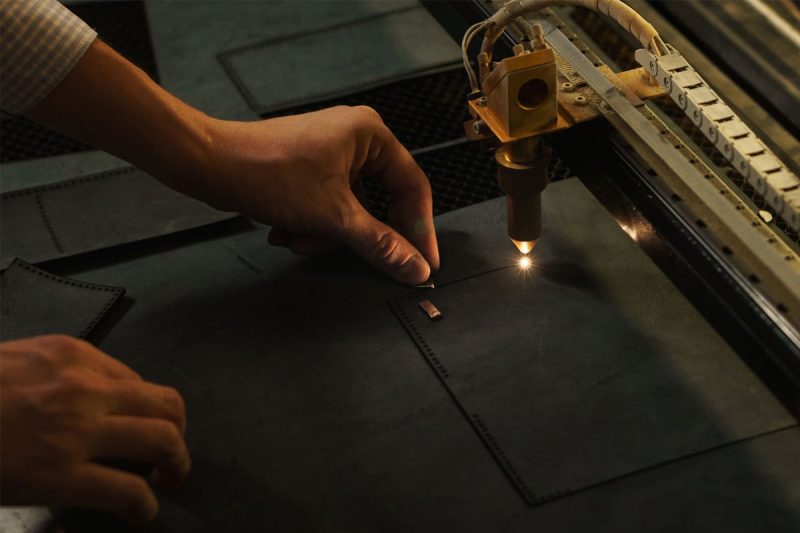
Sağlık ve Güvenlik Hususları
Potansiyel Sağlık Riskleri
Lazer kesme makinesi radyasyonuna maruz kalmak çeşitli sağlık riskleri getirebilir. Birincisi, yüksek enerjili lazer ışınlarıyla doğrudan temas cilt yanıklarına neden olabilir. Lazerin yüksek sıcaklığı ve yüksek enerjisi cildin sıcaklığını hızla artırabilir, kızarıklık, şişme, ağrı ve hatta derin yanıklara neden olabilir. İkincisi, lazer radyasyonu özellikle gözler için zararlıdır, retina yanıklarına veya kornea hasarına neden olabilir ve ciddi vakalarda kalıcı görme kaybına neden olabilir. Ek olarak, lazer radyasyonuna uzun süreli maruz kalma görme dejenerasyonuna neden olabilir ve göz yorgunluğu ve bulanık görme riskini artırabilir. Cilt kanseri riskinin artması da bir endişe kaynağıdır. Ultraviyole ve kızılötesi radyasyona uzun süreli maruz kalma cilt yaşlanmasına ve kötü huylu tümörlerin oluşumuna neden olabilir. Hücre hasarı da potansiyel sağlık risklerinden biridir, özellikle iyonlaştırıcı radyasyonun hücre DNA'sına zarar vererek mutasyonlara ve kansere neden olabileceği yüksek enerjili lazer operasyonlarında. Operatörler bu riskleri tam olarak anlamalı ve sağlıklarını ve güvenliklerini sağlamak için gerekli koruyucu önlemleri almalıdır.
Güvenlik Önlemlerinin Uygulanmasının Önemi
Güvenlik önlemlerinin uygulanması, lazer radyasyonu riskini azaltmak için kritik öneme sahiptir. Lazer kalkanları ve ekranları gibi koruyucu bariyerler, lazer radyasyonunu etkili bir şekilde engelleyebilir ve operatörlerin lazer ışınına maruz kaldığı süreyi azaltabilir. Lazer güvenlik gözlükleri ve ısıya dayanıklı tulumlar gibi kişisel koruyucu ekipmanlar, operatörlere lazer ışınlarına ve radyasyona doğrudan maruz kalmaya karşı ek koruma sağlayabilir. Ekipmanın düzenli bakımı ve denetimi, lazer kesme makinesinin koruyucu cihazlarının ve güvenlik sistemlerinin düzgün çalışmasını sağlamak için güvenlik yönetiminin önemli bir parçasıdır. Ekipman, olası arızaları tespit etmek ve onarmak ve koruyucu önlemlerin etkinliğini sağlamak için düzenli olarak denetlenmeli ve bakımı yapılmalıdır. Sıkı güvenlik önlemleriyle, operatörler için radyasyonun sağlık riskleri önemli ölçüde azaltılabilir ve güvenli bir çalışma ortamı yaratılabilir.
İş Sağlığı ve Güvenliği Mevzuatı
Dünya çapında birçok ülke ve bölge, operatörlerin sağlığını korumak için lazer radyasyonuyla ilgili iş sağlığı ve güvenliği yönetmelikleri oluşturmuştur. Örneğin, ABD ANSI Z136.1 standardı lazer radyasyonu için güvenli çalışma özelliklerini belirtir, koruyucu önlemleri ve çalışma prosedürlerini açıklar ve lazer radyasyonunun çalışanlara verebileceği potansiyel zararı azaltmayı amaçlar. Avrupa IEC 60825 standardı ayrıca ekipman tasarımı, çalışma özellikleri ve radyasyon koruması dahil olmak üzere lazer ekipmanı için güvenlik gereksinimleri sağlar. Bu yönetmeliklere uyulması, lazer kesme makinelerinin güvenli bir şekilde çalışmasını sağlayabilir ve operatörler için sağlık risklerini azaltabilir. Bu iş sağlığı ve güvenliği yönetmeliklerine sıkı sıkıya uyularak operatörlerin sağlığı etkili bir şekilde korunabilir ve çalışma ortamının güvenliği sağlanabilir.
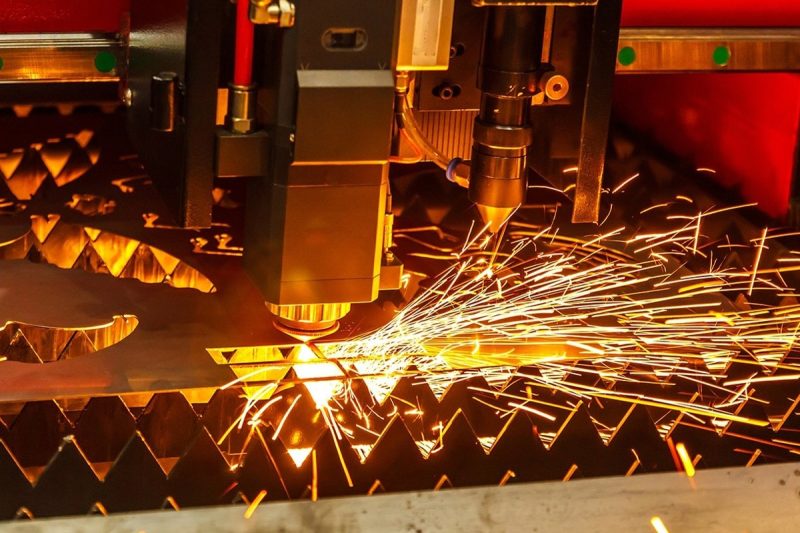
Radyasyon Seviyelerini Etkileyen Faktörler
Makine Ayarları ve Parametreleri
Lazer kesim makinesinin ayarları ve parametreleri radyasyon yoğunluğu ve güvenlik üzerinde doğrudan etkilidir:
- Güç: Lazer kesme makinesinin gücü, lazer ışınının enerji çıkışını belirler. Yüksek güç ayarları kesme verimliliğini artırabilse de, radyasyon yoğunluğunu da artırır. Bu nedenle, kesme görevleri gerçekleştirirken, kesme etkisini iyileştirirken radyasyon riskinin aşırı artmamasını sağlamak için lazerin güç ayarını malzemenin özelliklerine ve işleme gereksinimlerine göre ayarlamak gerekir.
- Frekans: Lazer kesme makinesinin frekans ayarı, lazer darbelerinin frekansını etkiler. Yüksek frekans ayarları, daha sık lazer darbesi üst üste binmesine yol açabilir ve bu da radyasyon yoğunluğunu ve karmaşıklığını artıracaktır. Bu nedenle, kesme etkisini ve radyasyon kontrolünü dengelemek için frekans, işleme görevinin gereksinimlerine göre makul bir şekilde ayarlanmalıdır.
- Odak konumu: Lazer ışınının odak konumu, lazer enerjisinin konsantrasyonunu ve kesme doğruluğunu etkiler. Odak konumunun ayarlanması yalnızca kesme kalitesini etkilemekle kalmaz, aynı zamanda radyasyonun dağılımını ve yoğunluğunu da etkiler. Lazer kesme makinesini kurarken, odak konumunun ayarının en iyi kesme etkisini ve güvenliği elde etmek için çalışma gereksinimlerini karşıladığından emin olun.
Lazer Kesim İşlemine Maruz Kalma Süresi ve Yakınlık
Operatörün lazer kesim işlemine maruz kalma süresi ve yakınlığı radyasyon riskini doğrudan etkiler:
- Maruz kalma süresi: Operatör lazer kesim makinesinin yakınında ne kadar uzun süre kalırsa, radyasyon etkilerinin olasılığı o kadar artar. Riski azaltmak için, operatörün lazer kesim alanında kalışı, uzun vadeli radyasyon maruziyetini azaltmak için en aza indirilmelidir.
- Lazer kesim işlemine yakın zaman: Lazer kesim işlemi sırasında operatör güvenli bir mesafeyi korumaya çalışmalıdır. Lazer kesim alanıyla temas süresini ve sıklığını azaltmak, potansiyel radyasyon riskini azaltabilir. Uygun bir dinlenme ve dönüş sistemi benimsemek de operatörün radyasyona maruz kalmasını etkili bir şekilde azaltabilir.
Güvenlik Fonksiyonlarının ve Susturma Mekanizmalarının Verimliliği
Lazer kesim makinelerinin güvenlik özellikleri ve koruma mekanizmaları operatörlerin sağlığını korumak için olmazsa olmazdır:
- Koruyucu ekranlar: Modern lazer kesim makineleri genellikle lazer radyasyonunu etkili bir şekilde izole edebilen ve lazer ışınının operatöre doğrudan temas etmesini önleyebilen koruyucu ekranlarla donatılmıştır. Koruyucu ekranların tasarımı ve kurulumu, etkinliklerini garantilemek için güvenlik standartlarına uygun olmalıdır.
- Otomatik kapanma mekanizması: Lazer kesme makinesiyle donatılmış otomatik kapanma mekanizması, ekipmanda bir anormallik tespit ettiğinde veya birisi lazer kesme alanına yaklaştığında lazer kaynağını otomatik olarak kesebilir. Bu mekanizma, olası güvenlik tehditlerine hızlı bir şekilde yanıt verebilir ve kazara yaralanmaları önleyebilir.
- Güvenlik kilitleme cihazı: Güvenlik kilitleme cihazı, lazer kesme makinesinin hazır olmadığında veya güvenlik kontrolü tamamlanmadığında çalışmasını önler. Ekipmanın çalıştırılmadan önce tamamen denetlendiğinden ve tüm güvenlik önlemlerinin yerinde olduğundan emin olun.
- Düzenli bakım: Sürekli etkililiğini sağlamak için güvenlik özelliklerini ve koruma mekanizmalarını düzenli olarak kontrol edin ve bakımını yapın. Ekipmanın düzenli bakımı, olası arızaları tespit edip onarabilir ve tüm güvenlik özelliklerinin her zaman en iyi durumda olmasını sağlayarak radyasyon risklerini etkili bir şekilde azaltabilir.
Lazer kesim makinesinin güvenliği, makine ayarlarının optimize edilmesi, operatörlerin maruz kalma sürelerinin düzgün bir şekilde planlanması ve güvenlik özellikleri ile koruma mekanizmalarının verimliliğinin artırılması yoluyla operatörleri potansiyel radyasyon risklerinden korumak için büyük ölçüde iyileştirilebilir.
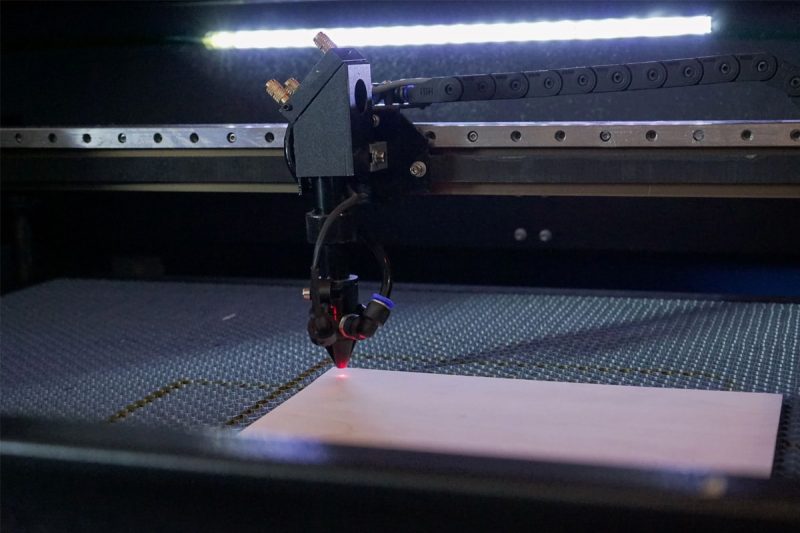
Yönetmelikler ve Standartlar
Lazer Kesim Makineleri için Radyasyon Emisyon Yönetmelikleri ve Standartlarına Genel Bakış
Lazer kesim ekipmanlarının üretimi ve kullanımı, radyasyon seviyelerinin güvenli bir aralıkta olduğundan emin olmak için uluslararası ve ulusal radyasyon emisyon standartlarına uymalıdır. Bu standartlar, operatörlerin ve çevredeki ortamın güvenliğini korumak için lazer radyasyonu hakkında özel gereksinimler ve yönergeler sağlar. IEC 60825, Uluslararası Elektroteknik Komisyonu (IEC) tarafından geliştirilen, lazer ekipmanı sınıflandırmasını, lazer radyasyon koruma önlemlerini ve operasyonel güvenlik gereksinimlerini kapsayan bir lazer ekipmanı güvenlik standardıdır. Bu standart, ekipmanın çalışma sırasında personele gereksiz radyasyon hasarı vermemesini sağlamak için lazer ekipmanının tasarımı, üretimi ve kullanımı için ayrıntılı güvenlik özellikleri sağlar.
Amerika Birleşik Devletleri'nde, ANSI Z136.1 standardı Amerikan Ulusal Standartlar Enstitüsü (ANSI) tarafından yayınlanmıştır ve lazer radyasyon güvenliği için önemli bir kılavuzdur. Bu standart, operatörler ve diğer personel için lazer radyasyonunun risklerini azaltmak amacıyla lazer ekipmanının kullanımını, çalışma özelliklerini ve gerekli koruyucu önlemleri belirtir. Lazer ekipmanının güvenli çalışmasını ve etkili korumasını sağlamak için lazer ışın yoğunluğu, radyasyon alanı, uyarı işaretleri ve kişisel koruyucu ekipman için gereklilikler sağlar.
Lazer Kesim Ekipmanı Üreticileri ve Kullanıcıları için Uyumluluk Gereksinimleri
Bu güvenlik standartlarını karşılamak için, lazer kesim ekipmanı üreticileri tasarım ve üretim süreci boyunca ilgili düzenlemelere sıkı sıkıya uymalıdır. Üreticilerin, IEC 60825 ve ANSI Z136.1 gibi standartların gerekliliklerini karşıladığından emin olmak için ekipmanın gerekli testlerini ve sertifikasyonunu yapması gerekir. Bu, ekipmanın radyasyon güvenliği özelliklerinin, uyarı işaretlerinin, koruma cihazlarının ve otomatik güvenlik mekanizmalarının doğrulanmasını içerir.
Kullanıcılar ayrıca lazer kesim ekipmanını çalıştırırken ekipmanın güvenli kullanımını sağlamaktan da sorumludur. Operatörler, ekipmanın doğru kullanımını ve ekipmanın radyasyon koruma önlemlerini anlamak için ilgili güvenlik eğitimini almalıdır. Eğitim içeriği genellikle lazer radyasyonu, ekipman çalışma özellikleri, acil durum işleme prosedürleri ve kişisel koruyucu ekipman kullanımı hakkında temel bilgileri içerir. Operatörlerin bu bilgiye aşina olmasını sağlamak, radyasyon maruziyetini azaltmaya ve çalışma ortamının güvenliğini iyileştirmeye yardımcı olabilir.
Düzenli Denetimlerin ve Uygunluk Kontrollerinin Önemi
Düzenli inceleme ve bakım, lazer kesim ekipmanının güvenliğini sağlamak için önemli önlemlerdir. Ekipman, potansiyel güvenlik tehlikelerini belirlemek ve onarmak için üreticinin önerilerine ve ilgili standartlara göre düzenli olarak incelenmelidir. Buna, ekipmanın kalkanlama cihazlarının, koruma sistemlerinin, uyarı işaretlerinin ve diğer güvenlik özelliklerinin etkinliğinin kontrol edilmesi dahildir. Düzenli bakım, ekipmanın her zaman optimum çalışma koşullarında olmasını sağlamaya yardımcı olur, radyasyon risklerini azaltır ve ekipmanın hizmet ömrünü uzatır.
Uyumluluk denetimleri, ekipmanın güvenlik standartlarına uymaya devam etmesini sağlamada önemli bir bağlantıdır. Uyumluluk denetimleri gerçekleştirerek, olası güvenlik sorunları belirlenebilir ve ekipmanın tüm koruyucu önlemleri ve güvenlik özellikleri hala düzgün bir şekilde çalışır. Bu, yalnızca operatörün sağlığını korumaya yardımcı olmakla kalmaz, aynı zamanda işletmenin güvenli bir şekilde çalışmasını ve düzenleyici gerekliliklere uyulmasını da sağlar. Düzenli uyumluluk denetimleri ve bakımı, kazaları önlemek ve güvenliği sağlamak için önemli garantilerdir.
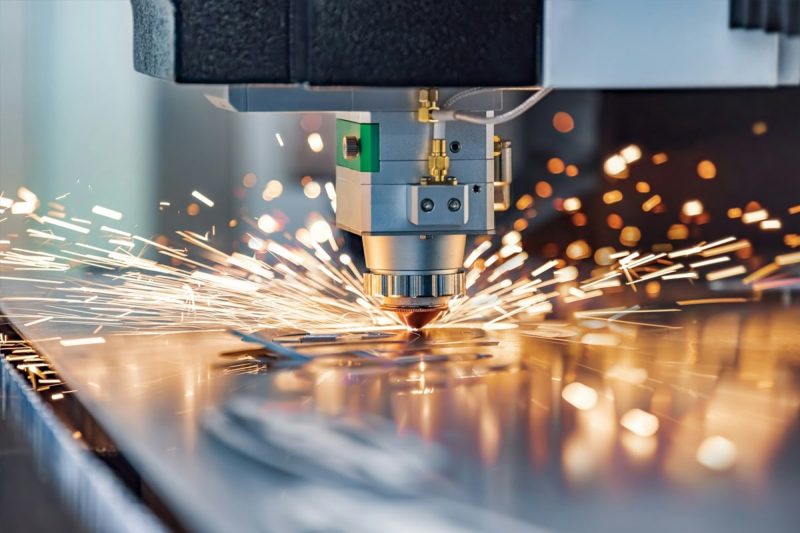
Radyasyon Güvenlik Önlemleri
Mühendislik kontrolleri
- Muhafaza: Lazer kesme makinesini sağlam bir muhafaza ile donatmak, radyasyon sızıntısını azaltmak için etkili bir önlemdir. Muhafaza, ilgili güvenlik standartlarına göre tasarlanmalı ve lazer ışınının ve radyasyonun ekipmanın dışına sızmasını önlemek için yüksek kaliteli malzemelerden yapılmalıdır. Muhafaza iyi bir sızdırmazlık performansına sahip olmalı ve radyasyon sızıntısı için potansiyel kanallar olabilecek olası çatlak veya boşluklardan kaçınmalıdır. Muhafazanın bütünlüğünü ve güvenliğini düzenli olarak kontrol ederek, ekipmanın çalışması sırasında radyasyonu her zaman etkili bir şekilde koruyabildiğinden ve operatörün ve çevredeki ortamın güvenliğini koruyabildiğinden emin olun.
- Bariyer: Uygun koruyucu bariyerler kurmak, operatörleri dağılmış lazer radyasyonundan korumak için önemli bir önlemdir. Koruyucu bariyerler, lazer kesim makinesinin çalışma özelliklerine ve çevre koşullarına göre tasarlanmalı ve lazerin dağılmış ışığını ve yansıyan ışığını etkili bir şekilde engelleyebileceklerinden emin olunmalıdır. Bariyerin malzemesi yeterli mukavemete ve dayanıklılığa sahip olmalı ve ilgili güvenlik standartlarını karşılamalıdır. Koruyucu bariyerin yüksekliği ve konumu, operatörün normal çalışma sırasında her zaman güvenli alanın dışında olmasını ve diğer personelin radyasyona maruz kalma riskini azaltmasını sağlamak için makul bir şekilde planlanmalıdır.
İdari Kontrol
- Eğitim: Operatörler, lazer ekipmanının güvenli çalışma özellikleri ve koruma işlevleriyle kendilerini tanıştırmak için ayrıntılı radyasyon koruma eğitimi almalıdır. Eğitim içeriği, lazer radyasyonu, ekipman çalışma prosedürleri, radyasyon koruma önlemleri, acil durum prosedürleri ve kişisel koruyucu ekipmanın nasıl düzgün kullanılacağı hakkında temel bilgileri içermelidir. Operatörlerin en son güvenlik operasyon becerilerine ve bilgilerine hakim olmalarını ve radyasyon risklerine karşı farkındalıklarını ve yanıt yeteneklerini geliştirmelerini sağlamak için düzenli eğitim güncellemeleri yapılmalıdır. Eğitim yalnızca operatörlerin sağlığını korumaya yardımcı olmakla kalmaz, aynı zamanda iş verimliliğini artırır ve ekipman arızalarını azaltır.
- İşaretler: Lazer ekipmanının etrafındaki açık uyarı işaretleri, operatörlere ve diğer personele radyasyon risklerini etkili bir şekilde hatırlatabilir. Bu işaretler, tüm personelin işaretin ilettiği mesajı tanımlayıp anlayabilmesini sağlamak için dikkat çekici renkler ve net çizimler ve metinler kullanmalıdır. Uyarı işaretleri, lazer kesim alanında belirgin yerlere yerleştirilmeli ve her zaman görünür kalmalarını sağlamak için düzenli olarak kontrol edilmeli ve güncellenmelidir. İşaretlerin ayarlanması, operatörlerin güvenlik farkındalığını artırmaya ve ihmalkarlıktan kaynaklanan radyasyon hasarını önlemeye yardımcı olabilir.
Kişisel Koruyucu Donanım (PPE)
- Güvenlik gözlükleri: Koruyucu gözlük takmak, gözleri lazer radyasyonundan korumak için temel bir önlemdir. Koruyucu gözlükler ilgili güvenlik standartlarına uymalı ve lazer radyasyonundan gelen zararlı ışığı doğrudan gözlerle temas etmesini önlemek için etkili bir şekilde filtreleyebilmelidir. Farklı güç ve dalga boylarındaki lazerlere uyum sağlamak için uygun gözlük ve lens malzemelerini seçin. Operatör, lazer kesme işlemi sırasında her zaman koruyucu gözlük takmalı ve hasarlı veya etkisiz olmadıklarından emin olmak için gözlüklerin durumunu düzenli olarak kontrol etmelidir.
- Eldivenler: Uygun koruyucu eldivenler, cilt ile lazer ışını arasındaki doğrudan teması önleyebilir ve radyasyon hasarını azaltabilir. Koruyucu eldivenler, etkili koruma sağlamak için yüksek sıcaklıklara, kesmeye ve lazer radyasyonuna dayanıklı malzemelerden yapılmalıdır. Eldiven seçerken, operatörün bunları giyerken ekipmanı normal şekilde çalıştırabilmesi için rahatlıkları ve esneklikleri dikkate alınmalıdır. İyi koruyucu performanslarını koruduklarından emin olmak için eldivenler düzenli olarak kontrol edilmeli ve değiştirilmelidir. Koruyucu eldiven kullanımı, lazer kesim sırasında oluşabilecek cilt hasarı ve radyasyon hasarı riskini azaltabilir.
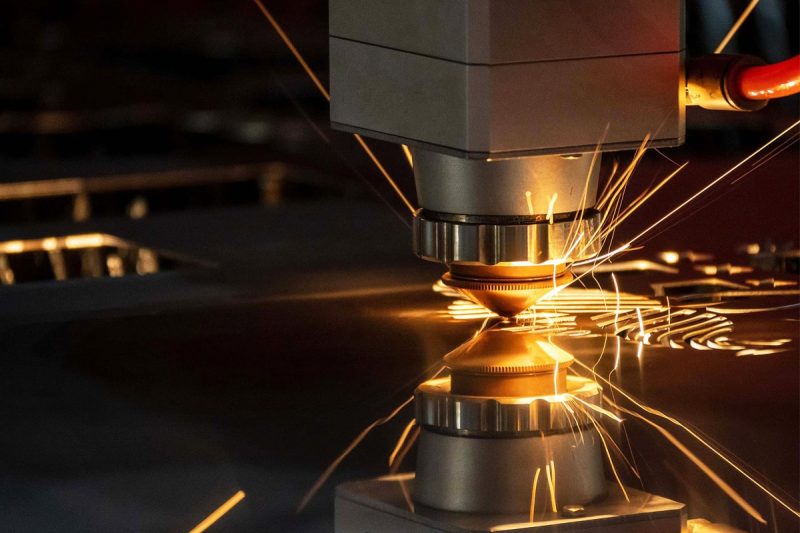
özetle
Verimli bir işleme ekipmanı olarak, lazer kesim makineleri üretim endüstrisine önemli bir üretkenlik iyileştirmesi ve işleme doğruluğu getirmiştir. Ancak, yüksek verimliliğiyle birlikte göz ardı edilemeyecek radyasyon riskleri de gelir. Lazer kesim makineleri, çalışma sırasında optik radyasyon (lazer ışınları gibi), iyonlaştırıcı olmayan radyasyon (kızılötesi ve ultraviyole gibi) ve aşırı koşullar altında üretilebilen iyonlaştırıcı radyasyon (X-ışınları gibi) dahil olmak üzere birçok radyasyon türü üretir. Bu radyasyonlar kesme kalitesini ve verimliliğini artırırken, operatöre ve çevreye potansiyel zarar da verebilir.
Radyasyon risklerini etkili bir şekilde azaltmak için şirketlerin radyasyon türleri ve sağlık üzerindeki etkileri hakkında derin bir anlayışa sahip olması gerekir. Doğru radyasyon koruma bilgisine hakim olmak ve çeşitli radyasyon risklerini zamanında tespit edip bunlara yanıt vermek, operatörlerin sağlığını ve güvenliğini korumak için temel oluşturur. Aynı zamanda şirketler, ekipman ve işletme süreçlerinin güvenlik gerekliliklerini karşıladığından emin olmak için IEC 60825 ve ANSI Z136.1 gibi ilgili düzenlemelere ve standartlara sıkı sıkıya uymalıdır.
Etkili koruma önlemlerinin uygulanması radyasyon risklerini azaltmanın anahtarıdır. Buna, sağlam muhafaza ve radyasyon sızıntısını önlemek için uygun koruyucu bariyerlerle donatmak; güvenlik bilincini artırmak için kapsamlı operatör eğitimi ve net uyarı işaretleri sağlamak; ve operatörleri doğrudan radyasyon hasarından korumak için güvenlik gözlükleri ve eldivenleri gibi uygun kişisel koruyucu ekipman kullanmak dahildir. Ayrıca, düzenli ekipman bakımı ve güvenlik denetimleri de koruma sisteminin düzgün çalıştığından emin olmak için gerekli adımlardır ve bu da potansiyel güvenlik tehlikelerini derhal tespit etmeye ve onarmaya yardımcı olur.
Şirketler bu önlemleri bir arada alarak yalnızca radyasyon risklerini etkili bir şekilde azaltmakla kalmaz, aynı zamanda çalışma ortamının güvenliğini ve üretim verimliliğini de artırabilir. Doğru radyasyon koruma stratejisi ve ekipman bakım uygulamaları, şirketlerin operatörlerin sağlığını ve güvenliğini sağlarken lazer kesim teknolojisinin avantajlarından yararlanmasına yardımcı olabilir. Bu kapsamlı güvenlik yönetimi yaklaşımı, lazer kesim makinesinin verimli işleme sağlarken güvenli ve sağlıklı bir çalışma ortamı sağlamasını garanti eder.
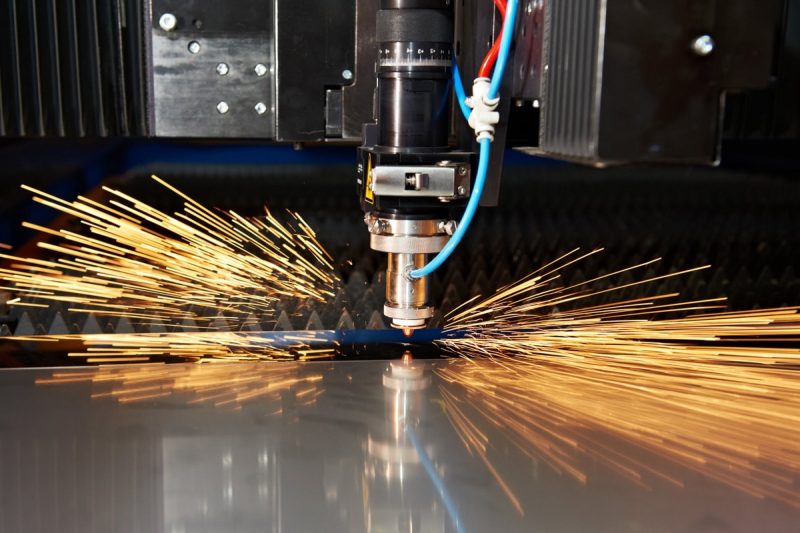
Lazer Çözümleri Alın
Doğruyu seçmek fiber lazer kesim makinesi güç tüketimini optimize etmenize ve yüksek operasyonel verimlilik elde etmenize yardımcı olabilir. Güvenilir bir tedarikçiyle çalışmak, gelişmiş teknolojiye, özel tavsiyelere ve sürekli desteğe erişim sağlar. AccTek Laser'da, çeşitli endüstriyel ihtiyaçları karşılamak üzere tasarlanmış kapsamlı bir lazer kesim ekipmanı yelpazesi sunuyoruz. Uzmanlarımız, malzeme türü, kalınlık ve üretim hacmi gibi faktörleri göz önünde bulundurarak en enerji verimli modeli ve yapılandırmayı seçmenize yardımcı olabilir. Ayrıca, performansı en üst düzeye çıkarmak ve enerji kullanımını en aza indirmek için akıllı soğutma sistemleri ve enerji yönetimi yazılımı gibi son teknoloji özellikler sunuyoruz. Ayrıca, ekibimiz ekipmanınızı en yüksek verimlilikte tutmak için planlı bakım hizmetleri ve 24 saat teknik destek sağlar. AccTek Laser ile ortaklık kurarak önemli enerji tasarrufları elde edebilir, işletme maliyetlerinizi düşürebilir ve sürdürülebilirlik çabalarınızı geliştirebilirsiniz. Yenilikçi lazer çözümlerimiz ve bunların işletmenize nasıl fayda sağlayabileceği hakkında daha fazla bilgi edinmek için bugün bizimle iletişime geçin.
İletişim bilgileri
- [email protected]
- [email protected]
- +86-19963414011
- 3 Bölge A, Lunzhen Sanayi Bölgesi, Yucheng Şehri, Shandong Eyaleti.
Lazer Çözümleri Alın
